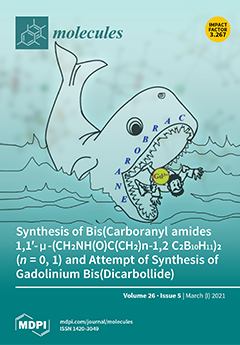A series of 30 non-covalent imidazo[1,2-
a]quinoxaline-based inhibitors of epidermal growth factor receptor (EGFR) were designed and synthesized. EGFR inhibitory assessment (against wild type) data of compounds revealed
6b,
7h,
7j,
9a and
9c as potent EGFR
WT inhibitors
[...] Read more.
A series of 30 non-covalent imidazo[1,2-
a]quinoxaline-based inhibitors of epidermal growth factor receptor (EGFR) were designed and synthesized. EGFR inhibitory assessment (against wild type) data of compounds revealed
6b,
7h,
7j,
9a and
9c as potent EGFR
WT inhibitors with IC
50 values of 211.22, 222.21, 193.18, 223.32 and 221.53 nM, respectively, which were comparable to erlotinib (221.03 nM), a positive control. Furthermore, compounds exhibited excellent antiproliferative activity when tested against cancer cell lines harboring EGFR
WT; A549, a non-small cell lung cancer (NSCLC), HCT-116 (colon), MDA-MB-231 (breast) and gefitinib-resistant NSCLC cell line H1975 harboring EGFR
L858R/T790M. In particular, compound
6b demonstrated significant inhibitory potential against gefitinib-resistant H1975 cells (IC
50 = 3.65 μM) as compared to gefitinib (IC
50 > 20 μM). Moreover, molecular docking disclosed the binding mode of the
6b to the domain of EGFR (wild type and mutant type), indicating the basis of inhibition. Furthermore, its effects on redox modulation, mitochondrial membrane potential, cell cycle analysis and cell death mode in A549 lung cancer cells were also reported.
Full article






